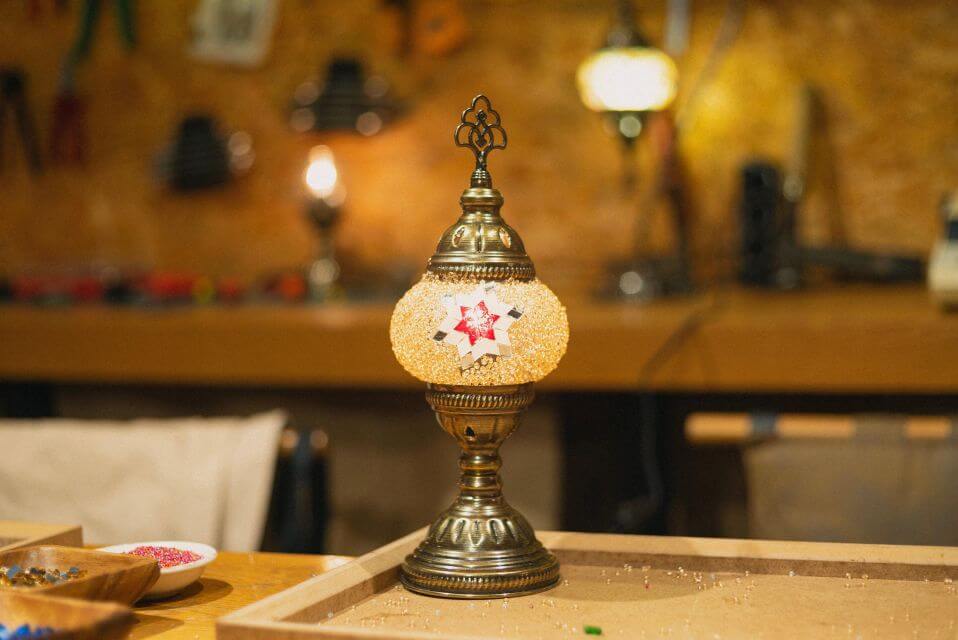

Built in 537 AD during the reign of Emperor Justinian I, Hagia Sophia served as an Eastern Orthodox cathedral for nearly 1,000 years. It was renowned for its massive dome and intricate mosaics, symbolizing the peak of Byzantine architecture and art.
In 1453, after the conquest of Constantinople by Sultan Mehmed II, Hagia Sophia was converted into a mosque. The Ottomans added minarets, Islamic calligraphy, and other architectural elements, marking its significance in Islamic culture while preserving its Christian artworks.
In 1935, Hagia Sophia was secularized and transformed into a museum by the Turkish Republic under Mustafa Kemal Atatürk. This change allowed visitors from around the world to appreciate its rich history and cultural significance, showcasing both its Christian and Islamic heritage.

It is advisable to purchase Hagia Sophia tickets in advance, especially during peak tourist seasons. Online booking allows you to secure your entry and avoid long queues, ensuring a smoother visit.
Consider joining a guided tour that includes Hagia Sophia along with other historical sites. These tours often provide in-depth knowledge and insights about the landmark, enhancing your overall experience.
For a more personalized experience, audio guides are available for rent at the entrance. These guides offer detailed commentary on the history, architecture, and significant artworks of Hagia Sophia, allowing you to explore at your own pace.

Hagia Sophia is celebrated for its immense dome, which appears to float above the nave. The innovative use of pendentives and the harmonious proportions of the structure showcase the architectural brilliance of the Byzantine era.
The interior of Hagia Sophia is adorned with stunning mosaics that depict significant Christian figures and scenes. Many of these artworks were preserved even after its conversion to a mosque, making them a vital part of its cultural heritage.
As a UNESCO World Heritage Site, Hagia Sophia represents a blend of Christian and Islamic cultures, reflecting the history of Istanbul as a crossroads of civilizations. Visitors can appreciate its significance in both religions during their tour.

Just a short walk from Hagia Sophia, the Blue Mosque is famous for its stunning blue tiles and grand architecture. It’s a must-visit site that complements the historical exploration of the area.
Located nearby, Topkapi Palace was the residence of Ottoman sultans for centuries. Visitors can explore its opulent courtyards, museums, and the impressive collection of artifacts, including the famous Topkapi Dagger.
A short distance away, the Basilica Cistern is an ancient underground water reservoir that showcases impressive columns and atmospheric lighting. It provides a fascinating glimpse into the engineering achievements of the Byzantine era.

Families can engage in interactive learning experiences through guided tours tailored for children. These tours often include storytelling elements that capture young visitors' attention and help them learn about Hagia Sophia's history in a fun way.
The stunning architecture and beautiful mosaics provide excellent opportunities for family photography. Children can enjoy taking pictures in front of the impressive dome and capturing memories of their visit.
After touring Hagia Sophia, families can explore the surrounding area, including parks and gardens, where children can play and enjoy a picnic. The nearby historical sites also offer additional educational experiences for the whole family.


The Hagia Sophia, located in Istanbul, Turkey, stands as a monumental testament to Byzantine architecture and rich history. Originally built as a cathedral in 537 AD by Emperor Justinian I, it was the world’s largest Christian church for nearly a thousand years. After the Ottoman conquest in 1453, it was converted into a mosque, blending Islamic architectural details with Christian mosaics. In 1935, it transformed into a museum under Atatürk’s secular reforms, symbolizing unity between cultures and religions. However, in 2020, it was re-designated as a mosque but remains open to visitors, showcasing its intricate mosaics and impressive dome.
Visitors on a Hagia Sophia guided tour experience both its historic ambiance and architectural splendor. Hagia Sophia tickets allow entry into this iconic landmark where tourists can appreciate the grandeur of its towering minarets, stunning mosaics, and detailed Islamic calligraphy. Currently, Hagia Sophia Istanbul ticket prices vary based on the type of tour and season, but entry is free for worship. Guided tours provide insights into its historical significance, cultural transitions, and architectural innovations, making Hagia Sophia a must-visit landmark that reflects Istanbul's layered history.
Highlights
Visiting Hagia Sophia was an unforgettable journey into history. As I approached the magnificent structure, I was awestruck by its sheer size and intricate details. The blend of Byzantine and Ottoman architectural styles is mesmerizing, making it a UNESCO World Heritage Site. Walking through the main entrance, I felt the weight of centuries pressing down on me, wondering about the countless stories that unfolded within its walls.
Inside, the sight of the massive dome that seems to float above the central nave took my breath away. Sunlight streamed through the windows, illuminating the stunning mosaics on the walls. I spent time admiring these vibrant depictions of religious figures, each telling its own story. The guide provided fascinating insights into the artistic techniques used by Byzantine artists, deepening my appreciation for their work. I learned about the Hagia Sophia museum hours and made a note of the Hagia Sophia visiting hours for my next trip.
As I explored further, I took a moment to stand beneath the minarets, reflecting on their historical significance and the Islamic heritage they represent. The juxtaposition of Christian and Islamic elements within Hagia Sophia highlights the city’s diverse cultural history. Listening to the guide’s anecdotes about the building’s transformation over the centuries made the experience even more enriching. I also checked the Hagia Sophia Istanbul ticket price to plan my return visit, noting the Hagia Sophia tickets price for budget considerations.
Before leaving, I made sure to purchase Hagia Sophia tickets in advance for a future visit, knowing I would want to return. I noted that Hagia Sophia is conveniently located in the heart of Istanbul, making it an easy addition to any itinerary. I also checked the Hagia Sophia opening hours and Hagia Sophia museum opening hours to ensure I could maximize my next visit. Leaving, I felt a profound connection to history and a renewed curiosity about the stories that have shaped this incredible landmark and the vibrant city of Istanbul itself.
The Hagia Sophia, located in Istanbul, Turkey, stands as a monumental testament to Byzantine architecture and rich history. Originally built as a cathedral in 537 AD by Emperor Justinian I, it was the world’s largest Christian church for nearly a thousand years. After the Ottoman conquest in 1453, it was converted into a mosque, blending Islamic architectural details with Christian mosaics. In 1935, it transformed into a museum under Atatürk’s secular reforms, symbolizing unity between cultures and religions. However, in 2020, it was re-designated as a mosque but remains open to visitors, showcasing its intricate mosaics and impressive dome.
Visitors on a Hagia Sophia guided tour experience both its historic ambiance and architectural splendor. Hagia Sophia tickets allow entry into this iconic landmark where tourists can appreciate the grandeur of its towering minarets, stunning mosaics, and detailed Islamic calligraphy. Currently, Hagia Sophia Istanbul ticket prices vary based on the type of tour and season, but entry is free for worship. Guided tours provide insights into its historical significance, cultural transitions, and architectural innovations, making Hagia Sophia a must-visit landmark that reflects Istanbul's layered history.
Highlights
Visiting Hagia Sophia was an unforgettable journey into history. As I approached the magnificent structure, I was awestruck by its sheer size and intricate details. The blend of Byzantine and Ottoman architectural styles is mesmerizing, making it a UNESCO World Heritage Site. Walking through the main entrance, I felt the weight of centuries pressing down on me, wondering about the countless stories that unfolded within its walls.
Inside, the sight of the massive dome that seems to float above the central nave took my breath away. Sunlight streamed through the windows, illuminating the stunning mosaics on the walls. I spent time admiring these vibrant depictions of religious figures, each telling its own story. The guide provided fascinating insights into the artistic techniques used by Byzantine artists, deepening my appreciation for their work. I learned about the Hagia Sophia museum hours and made a note of the Hagia Sophia visiting hours for my next trip.
As I explored further, I took a moment to stand beneath the minarets, reflecting on their historical significance and the Islamic heritage they represent. The juxtaposition of Christian and Islamic elements within Hagia Sophia highlights the city’s diverse cultural history. Listening to the guide’s anecdotes about the building’s transformation over the centuries made the experience even more enriching. I also checked the Hagia Sophia Istanbul ticket price to plan my return visit, noting the Hagia Sophia tickets price for budget considerations.
Before leaving, I made sure to purchase Hagia Sophia tickets in advance for a future visit, knowing I would want to return. I noted that Hagia Sophia is conveniently located in the heart of Istanbul, making it an easy addition to any itinerary. I also checked the Hagia Sophia opening hours and Hagia Sophia museum opening hours to ensure I could maximize my next visit. Leaving, I felt a profound connection to history and a renewed curiosity about the stories that have shaped this incredible landmark and the vibrant city of Istanbul itself.
As I wandered through Hagia Sophia, I found myself captivated by the blend of cultures and histories that define this iconic landmark. Standing under the majestic dome, I felt an overwhelming sense of awe at the architectural mastery that made it possible. Knowing the Hagia Sophia opening hours and Hagia Sophia museum opening hours in advance allowed me to plan my visit smoothly. I was grateful I’d already secured Hagia Sophia tickets, avoiding long lines and maximizing my time.
Each step revealed intricate mosaics and details that seemed to whisper stories of the Haya Sophia church in its Byzantine era, later transforming into an Ottoman mosque, and now a museum known as Aya Sophia Museum. The guide shared insights into Hagia Sophia museum hours and enriched my understanding of this historic treasure. Walking through these spaces with my Hagia Sophia museum tickets felt like a journey through centuries of history and culture.
Exploring the Imperial Gate and serene courtyard, I fully appreciated the significance of Hagia Sophia timings and Hagia Sophia visiting hours, which allowed ample time to take in the beauty of the minarets and mosaics. I felt connected to both the Christian and Islamic legacies of Hagia Sophia and was in awe of its historical transformation. Keeping track of Hagia Sophia Istanbul hours and what time is Hagia Sophia open also ensured I could immerse myself in the experience.
This visit left me with a deep respect for Istanbul’s unique heritage and a desire to return and experience it all over again. Knowing the Hagia Sophia working hours and checking the Hagia Sophia Istanbul ticket price in advance will make planning my next trip to Aya Sophia Istanbul even easier.
As I wandered through Hagia Sophia, I found myself captivated by the blend of cultures and histories that define this iconic landmark. Standing under the majestic dome, I felt an overwhelming sense of awe at the architectural mastery that made it possible. Knowing the Hagia Sophia opening hours and Hagia Sophia museum opening hours in advance allowed me to plan my visit smoothly. I was grateful I’d already secured Hagia Sophia tickets, avoiding long lines and maximizing my time.
Each step revealed intricate mosaics and details that seemed to whisper stories of the Haya Sophia church in its Byzantine era, later transforming into an Ottoman mosque, and now a museum known as Aya Sophia Museum. The guide shared insights into Hagia Sophia museum hours and enriched my understanding of this historic treasure. Walking through these spaces with my Hagia Sophia museum tickets felt like a journey through centuries of history and culture.
Exploring the Imperial Gate and serene courtyard, I fully appreciated the significance of Hagia Sophia timings and Hagia Sophia visiting hours, which allowed ample time to take in the beauty of the minarets and mosaics. I felt connected to both the Christian and Islamic legacies of Hagia Sophia and was in awe of its historical transformation. Keeping track of Hagia Sophia Istanbul hours and what time is Hagia Sophia open also ensured I could immerse myself in the experience.
This visit left me with a deep respect for Istanbul’s unique heritage and a desire to return and experience it all over again. Knowing the Hagia Sophia working hours and checking the Hagia Sophia Istanbul ticket price in advance will make planning my next trip to Aya Sophia Istanbul even easier.
My Turkish food tour was a delicious journey into local flavors and culture. From the moment I bit into a freshly baked simit from a street vendor, I knew I was in for a treat. Exploring the bustling spice market was a sensory delight, with vibrant aromas of herbs and teas filling the air.
Tasting traditional dishes like kebabs and meze platters at family-run eateries gave me a genuine feel for the region's flavors, while indulging in baklava and Turkish delight was a perfect way to experience local sweets. Each dish had its own story and flavor.
The highlight was sipping on Turkish tea and learning to make lahmacun in a cooking demonstration. Experiencing the tradition and skill behind each dish made me appreciate Turkish cuisine even more.
Every stop added to the experience, and dining with locals made it unforgettable. I left with a deep appreciation for Turkish food and memories I can’t wait to share.
My Turkish food tour was a delicious journey into local flavors and culture. From the moment I bit into a freshly baked simit from a street vendor, I knew I was in for a treat. Exploring the bustling spice market was a sensory delight, with vibrant aromas of herbs and teas filling the air.
Tasting traditional dishes like kebabs and meze platters at family-run eateries gave me a genuine feel for the region's flavors, while indulging in baklava and Turkish delight was a perfect way to experience local sweets. Each dish had its own story and flavor.
The highlight was sipping on Turkish tea and learning to make lahmacun in a cooking demonstration. Experiencing the tradition and skill behind each dish made me appreciate Turkish cuisine even more.
Every stop added to the experience, and dining with locals made it unforgettable. I left with a deep appreciation for Turkish food and memories I can’t wait to share.
Highlights
Public Transportation: Utilize Istanbul's efficient public transport system. Trams and buses are convenient options for reaching Hagia Sophia. The Sultanahmet tram station is just a short walk away.
Walking: Hagia Sophia is centrally located in the Sultanahmet district, making it easy to explore on foot. Enjoy a leisurely stroll to nearby attractions such as the Blue Mosque and Topkapi Palace.
Biking: While biking isn’t as common in this area, some visitors choose to rent bicycles for a fun way to explore the city. Be mindful of pedestrian zones.
Taxis and Ride-Sharing: Taxis are readily available, and ride-sharing apps can provide convenient transport. Ensure the driver uses the meter or agree on a fare beforehand.
Guided Tours: Consider joining a guided tour that includes transportation. Many tours offer pick-up and drop-off services from your hotel or designated meeting points.
Walking Tours: Participate in a walking tour that covers Hagia Sophia and its surrounding historical sites. This allows for a more immersive experience as you learn about the area’s rich history.
Plan Your Visit According to Hours: Check Hagia Sophia hours and Hagia Sophia visiting hours to ensure you have ample time to explore.
Aya Sophia Istanbul Opening Hours: Before heading out, verify the Aya Sophia Istanbul opening hours as they may vary seasonally.
Accessibility: If you have mobility issues, check ahead for accessibility options. Some tours offer assistance for those who need it.
Plan Your Route: Use maps or navigation apps to plan your route to Hagia Sophia and ensure a smooth journey.